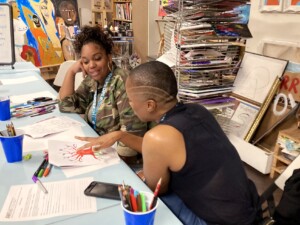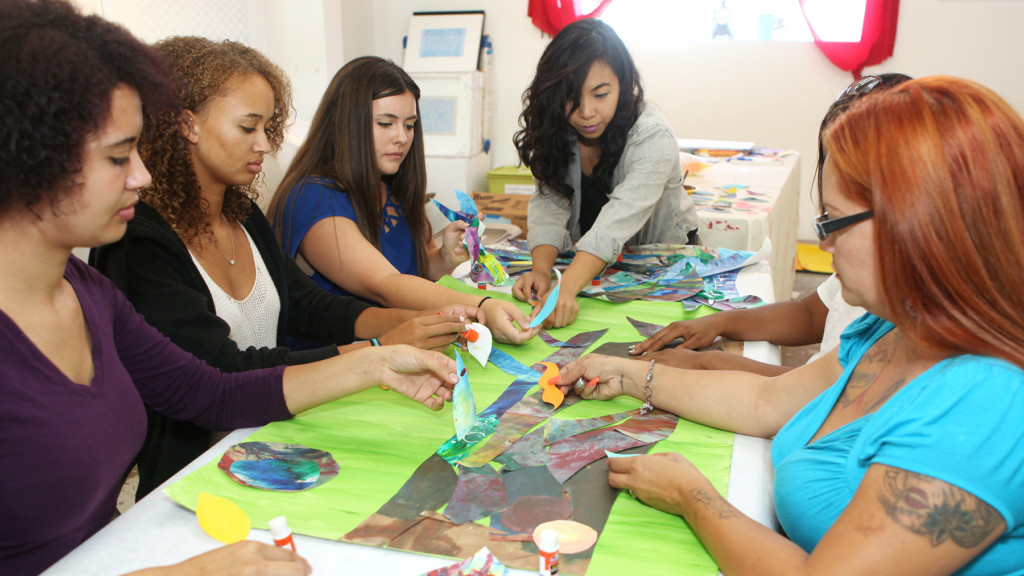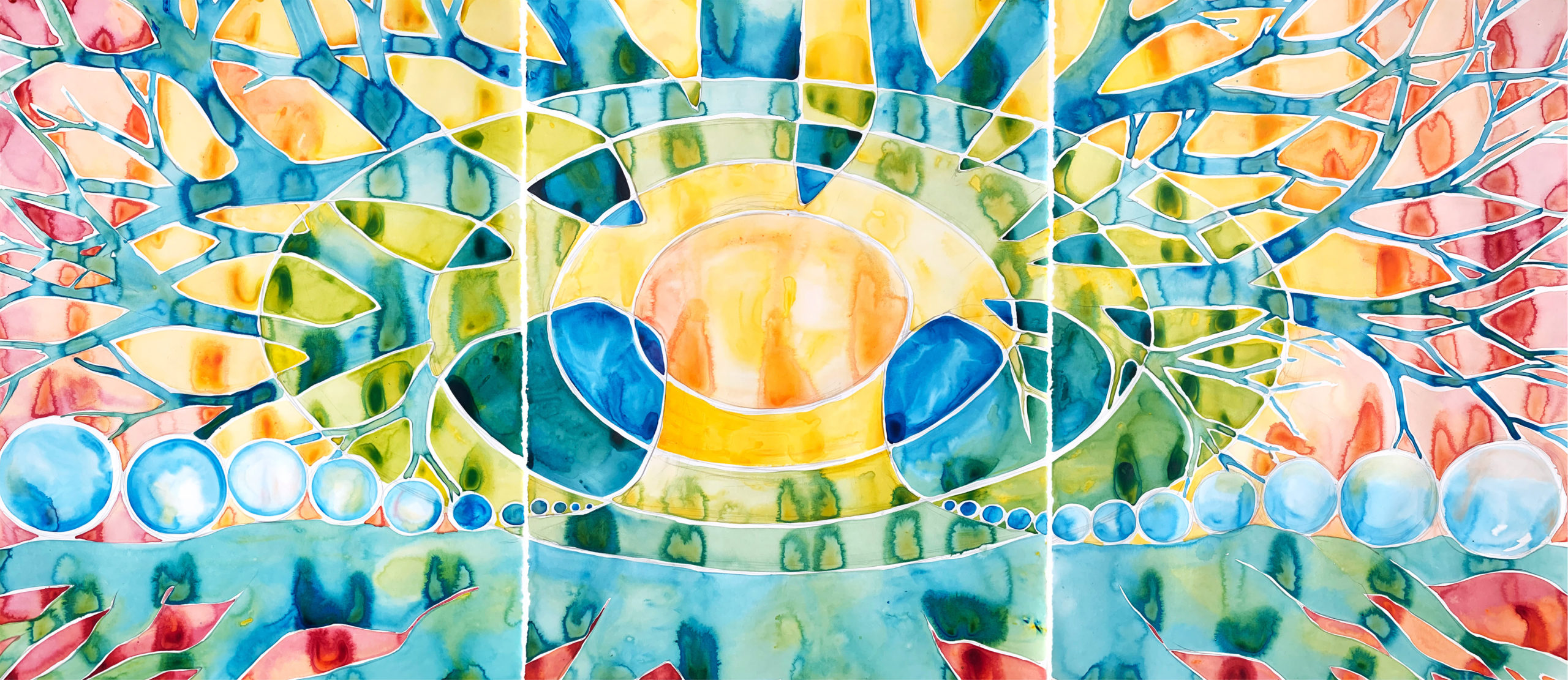by Christine Manley Martinez
Windows Facilitator, Wellness in the Workplace Toolkit Consultant
Los Angeles, California
When I got the job at the domestic violence shelter, I was ecstatic. I had landed my dream job, and I felt so proud to be doing work that was meaningful.
I knew I would be exposed, as part of this work, to stories of abuse on a daily basis – but what I couldn’t anticipate was the profound effect it would have on me. On my way home each day, stories of manipulation, coercion, and cruelty ran through my brain. My body was flooded with the emotions of the survivors I came into contact with – anxiety, desperation, hopelessness, confusion, and fear. Once home, in the safety of my partner’s company, I would let it all out and weep uncontrollably, needing to somehow get it all out of my body.
What started off as occasional venting turned into a chronic practice. It became common for me to come home and cry for an hour or two every night. When I asked my supervisor about how to deal with the trauma I was exposed to, I was encouraged to find my own self-care practices at home – walk the dog, exercise, take a bubble bath. These strategies felt absurd – like offering a bandaid to someone who is bleeding out. I thought that something must be wrong with me for not being able to handle it, for not holding it together, for not being able to self-care my way out of it all. So I learned to keep my struggles to myself.
Eventually, I had to admit to myself that I was falling apart and I needed to make a change. I had lasted two years in the field.
We Need Our Own Hard Hats
At the time I felt like two years was a failure, a sign I couldn’t cut it. I was surprised to find out that case managers in the homeless sector rarely last that long. In fact, those who have been around as long as I was are seen as long-term veterans.
I continued working in non-profits and over the years I picked up new concepts that might have helped me had I known about them when I first started out. I learned about vicarious trauma and realized that what I thought was a personal character flaw or weakness in me was actually common.
I also came across an empowering metaphor. The facilitator compared vicarious trauma in the nonprofit workplace to the workplace hazards in any other job industry. “If you work in construction,” she explained, “you have to wear a bright yellow vest and a sturdy construction hat to protect you. The safety hazards are a known condition of the job and so there are structures put in place to protect construction workers from harm. Similarly in the nonprofit world we are exposed to trauma as part of our day to day work – and so we need our own bright yellow vests and hard hats.”
This revolutionized my perspective. I had judged myself for being impacted by trauma and blamed myself for not being better at self-care. While there is certainly a role for individual responsibility when it comes to finding the specific ways that we release stress on a regular basis, the emphasis on personal responsibility has gone too far. In hazardous industries it is not just up to the employee to be safe – they are provided equipment and policies to support safety and management plays a role in ensuring their staff is safe. Why weren’t trauma workers receiving the same level of protection from the workplace hazards of their field?
Using Art to Support Trauma Workers
I recently facilitated a series of therapeutic art workshops on trauma exposure and its effects with a group of mental health clinicians working in the epicenter of the unhoused crisis in Los Angeles. When I asked what resonated with them, one by one they described the impact of their work on their physical and mental health – anxiety attacks, stomach aches, the need for medication – all connected to the trauma they were exposed to on a daily basis.
 In working with these clinicians, it was clear to me that what was needed wasn’t a trite message about self-care, but something deeper – something that would bring hope and relief. That’s where the AWBW “Wellness in the Workplace” Toolkit came in. With the first workshop, “Rooted in Purpose,” we explored the metaphor of a tree that grows strong roots during harsh winds. Participants were invited to use art to identify the “season” their tree was in, then they were invited to fill in the trunk and roots with the ways they have been grounding themselves, and add leaves, flowers, or branches to represent how they were thriving against the wind.
In working with these clinicians, it was clear to me that what was needed wasn’t a trite message about self-care, but something deeper – something that would bring hope and relief. That’s where the AWBW “Wellness in the Workplace” Toolkit came in. With the first workshop, “Rooted in Purpose,” we explored the metaphor of a tree that grows strong roots during harsh winds. Participants were invited to use art to identify the “season” their tree was in, then they were invited to fill in the trunk and roots with the ways they have been grounding themselves, and add leaves, flowers, or branches to represent how they were thriving against the wind.
When I returned for a second session 1 week later, I asked participants what impact or “ripples” our work together was having on them. Participants shared how they were reconnecting to grounding practices like listening to music, and taking breaks outdoors. They were finding simple everyday strategies that resonated. I felt a radiance and a warmth generated as they shared. Something had shifted, and they had gotten plugged into a grounding force that helped sustain them during challenging times.
Solutions for Secondary Trauma
The impact of secondary trauma on frontline workers is immense. Our workplace stress is a silent pandemic eating away at the health, happiness, wellbeing, and lifespan of workers.
The cost of caring for the most vulnerable should not be shouldered by workers to such an extent that we burnout and break. We owe it to staff working with trauma to provide them with the equivalent of hard hats and yellow vests. Decision makers within organizations should work to identify and implement as many “hard hats” as they can:
- Provide fair compensation and generous paid time off. Offer comprehensive agency paid healthcare and Employee Assistance Programs (EAP).
- Shift the Trauma Informed Care lens onto staff. Use the same rigorous analysis that was given to providing TIC to your clients to look at policies, practices, and support for staff.
- Create safe spaces for staff to bring their authentic selves to work (to the extent that they choose). This could include optional personal check-ins, sharing both highs and lows, seeking staff input and feedback regularly, opening up space for dissenting opinions, and building capacity for difficult conversations. Build a team culture that supports authenticity and vulnerability.
- Infuse celebration into your practice. Create frequent opportunities for giving and receiving authentic appreciation and recognition. Provide a range of methods (1 on 1, by team, org wide) and styles (words of appreciation, gifts, awards, etc.) to meet diverse preferences.
- Play. Incorporate opportunities for play, delight, silliness, and laughter in team meetings, check ins, and gatherings.
- Normalize conversations around secondary trauma. Demystify it. Avoid letting staff believe that this is an individual problem. Talk about it openly, and come up with strategies to support each other as a team when staff are being impacted.
- Offer supportive discussions around personal self-care. Go beyond generic advice to offering thought partnership and troubleshooting what is working and not working. Bring this topic to team meetings to generate more ideas and inspiration.
- Model self-care and acknowledge the impact of trauma at every level of the hierarchy. Managers must stop working during their time off if they want staff to feel they can also not work during time off. Salaried does not mean you are always on the clock. Set healthy boundaries about being completely off the clock.
- Seek out feedback and implement ongoing improvements. Check-in with staff regularly during one-on-ones about how they are being impacted, how the organization can support them, and aim to create an environment where staff feel comfortable getting support and tapping into the resources that are available.
- Provide generous self-care opportunities during work hours. Offer restorative, healing practices on an ongoing basis – art, dance, yoga, meditation, playing games, etc. If you can afford to bring in experts, great. If you can’t, explore what employees already know and want to share with each other or tap into the many free resources offered online. If this feels too challenging, start small (rotate who wants to share a fun game or ice breaker to start team meetings, play a mindfulness activity you find on YouTube) and grow over time.
- Participate in and facilitate art workshops like “Rooted in Purpose,” that are specifically designed to support trauma workers experiencing secondary trauma and burnout.
As for me, things look different from when I started 14 years ago. I’ve discovered a wellspring that gives me the capacity to make a real difference in the world – by reclaiming art as a tool for my own and others’ healing and care. My greatest wish now is to advocate for support and care for the frontline workers who are in the trenches now – to dispel any shame or guilt they feel about being impacted and give them tangible tools – like art – to build up their resilience as essential changemakers in the world. So all of us can keep doing our dream jobs – not for as long as we can, but for as long as we feel called to.
by Christine Manley Martinez
Windows Facilitator, Wellness in the Workplace Toolkit Consultant
Los Angeles, California
Download the Protecting Staff from the Hazards of Vicarious Trauma Handout:
Want to bring healing art programming to your workplace or community?
A Window Between Worlds (AWBW) supports hundreds of direct service organizations across the country to incorporate creative expression into their work with trauma survivors. With this blog we uplift the voices of our art workshop facilitators and participants. We invite you to take in this perspective, notice what resonates and explore how it may fit into your life.





